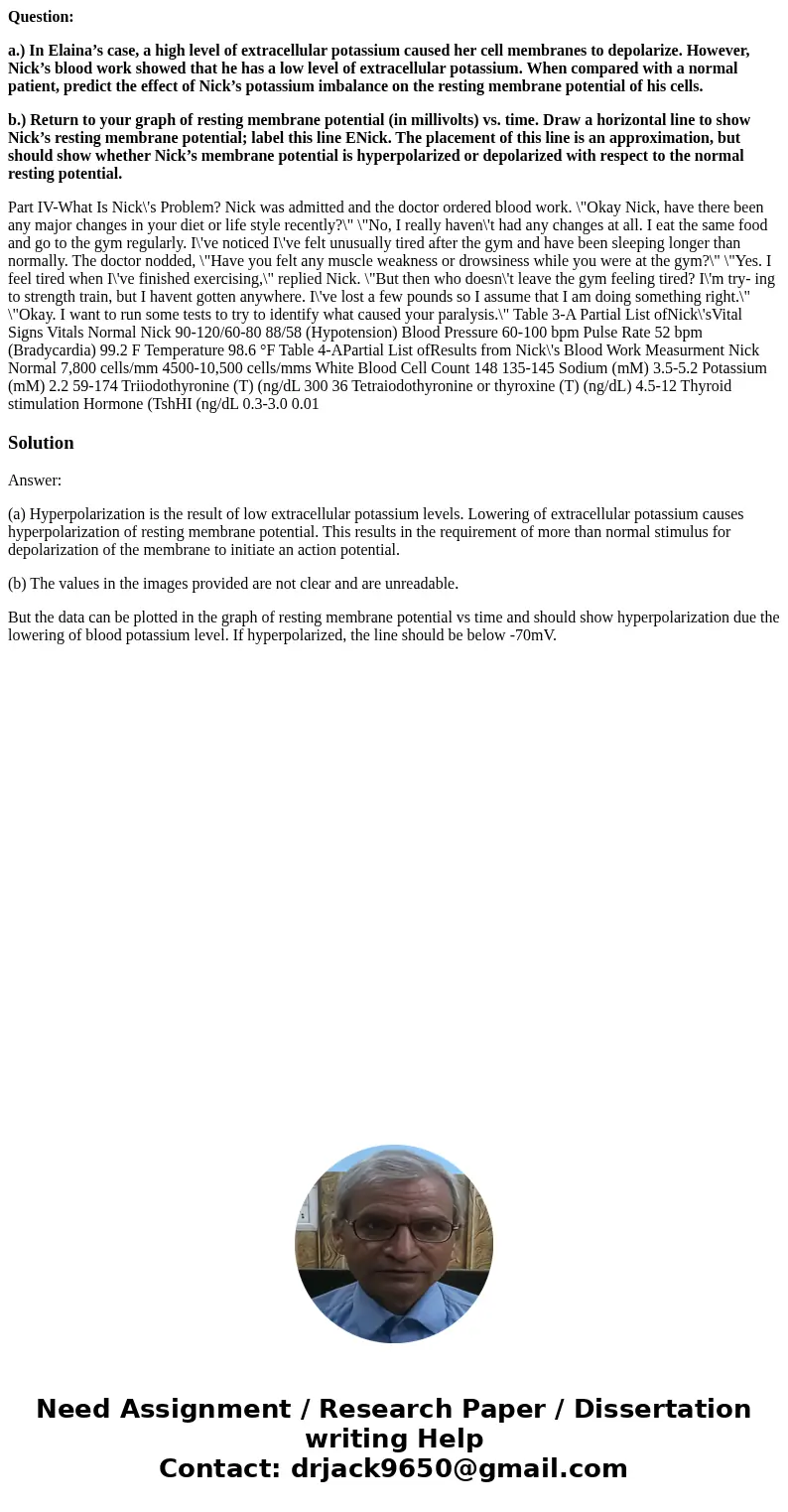Question a In Elainas case a high level of extracellular pot
Question:
a.) In Elaina’s case, a high level of extracellular potassium caused her cell membranes to depolarize. However, Nick’s blood work showed that he has a low level of extracellular potassium. When compared with a normal patient, predict the effect of Nick’s potassium imbalance on the resting membrane potential of his cells.
b.) Return to your graph of resting membrane potential (in millivolts) vs. time. Draw a horizontal line to show Nick’s resting membrane potential; label this line ENick. The placement of this line is an approximation, but should show whether Nick’s membrane potential is hyperpolarized or depolarized with respect to the normal resting potential.
Part IV-What Is Nick\'s Problem? Nick was admitted and the doctor ordered blood work. \"Okay Nick, have there been any major changes in your diet or life style recently?\" \"No, I really haven\'t had any changes at all. I eat the same food and go to the gym regularly. I\'ve noticed I\'ve felt unusually tired after the gym and have been sleeping longer than normally. The doctor nodded, \"Have you felt any muscle weakness or drowsiness while you were at the gym?\" \"Yes. I feel tired when I\'ve finished exercising,\" replied Nick. \"But then who doesn\'t leave the gym feeling tired? I\'m try- ing to strength train, but I havent gotten anywhere. I\'ve lost a few pounds so I assume that I am doing something right.\" \"Okay. I want to run some tests to try to identify what caused your paralysis.\" Table 3-A Partial List ofNick\'sVital Signs Vitals Normal Nick 90-120/60-80 88/58 (Hypotension) Blood Pressure 60-100 bpm Pulse Rate 52 bpm (Bradycardia) 99.2 F Temperature 98.6 °F Table 4-APartial List ofResults from Nick\'s Blood Work Measurment Nick Normal 7,800 cells/mm 4500-10,500 cells/mms White Blood Cell Count 148 135-145 Sodium (mM) 3.5-5.2 Potassium (mM) 2.2 59-174 Triiodothyronine (T) (ng/dL 300 36 Tetraiodothyronine or thyroxine (T) (ng/dL) 4.5-12 Thyroid stimulation Hormone (TshHI (ng/dL 0.3-3.0 0.01Solution
Answer:
(a) Hyperpolarization is the result of low extracellular potassium levels. Lowering of extracellular potassium causes hyperpolarization of resting membrane potential. This results in the requirement of more than normal stimulus for depolarization of the membrane to initiate an action potential.
(b) The values in the images provided are not clear and are unreadable.
But the data can be plotted in the graph of resting membrane potential vs time and should show hyperpolarization due the lowering of blood potassium level. If hyperpolarized, the line should be below -70mV.

 Homework Sourse
Homework Sourse